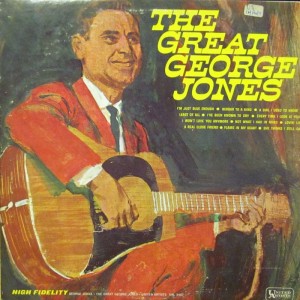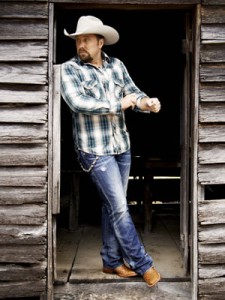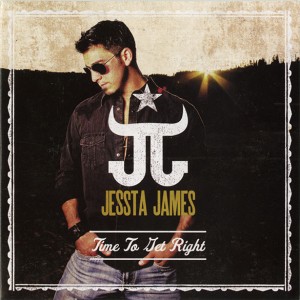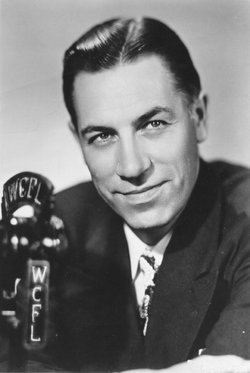Monthly Archives: April 2013
 Music Charts Magazine Live Celebrity Interview with “Sleepy Man Banjo Boys”
Music Charts Magazine Live Celebrity Interview with “Sleepy Man Banjo Boys”
( As seen on David Letterman Show, The Today Show, & The Mike Huckabee Show )
Celebrity Interview with “Sleepy Man Banjo Boys” by Music Charts Magazine’s Big Al Weekley. The interview and performance is LIVE!
– 13th Annual Country Bluegrass Show in North Plattes, NE – April 25-27, 2013
Please listen and watch the video below.
If you are a fan of “Sleepy Man Banjo Boys” this video is a must hear & see!
Forty-five minutes from New York City in the western hills of New Jersey live the Sleepy Man Banjo Boys. With a combined age younger than music’s Hip-Hop era, eleven-year-old Jonny Mizzone on banjo, along with his brothers Robbie (14) on fiddle, and Tommy (15) on guitar are determined to bring their up-tempo acoustic string music to the next generation. Inspired by the 1950’s music of Flatt & Scruggs & The Stanley Brothers, the Sleepy Man Banjo Boys are passionate about sharing their God-given musical gifts and invite you to watch them grow. Released in October, their second album “The Farthest Horizon”, charted at #4 on Billboard’s Bluegrass Album Chart.
Author Name = Paul de Barros
Genre = Jazz
Title = Shall We Play That One Together? The Life and Art of Jazz Piano Legend Marian McPartland
Publisher = St. Martin’s Press (2012)
One of the most famous jazz musicians, Marian McPartland is known less for her playing than for hosting the weekly NPR program Piano Jazz for more than three decades, beginning in 1978. Initially, each program featured McPartland and another pianist: the two performed selections together, but also solo. In time, the concept expanded to include guests other than pianists. The program was successful for several reasons, including McPartland’s engaging personality, articulateness, and British accent; the host and guests’ intelligent discussions; the quality of the music; and the hour-long format, which permitted the participants time to talk and play without rushing. Some of the shows were released on CD, and the show continues being broadcast in re-runs. For the title of his biography of McPartland, Paul de Barros borrowed a question the pianist often asked on her program.
Yet McPartland was a substantial pianist. (Though she is living, I use the past tense because she no longer plays.) Classically trained, she became enamored of and proficient in jazz, ultimately comfortable performing in traditional, modern, and even free modes. To me, her most rewarding decade was the 1950s, when she led a group with bassist Bill Crow and drummer Joe Morello, had a multi-year engagement at the Hickory House in New York, and recorded three appealing albums for Capitol in successive years, the first in 1954: At the Hickory House, After Dark, and The Marian McPartland Trio. (I am unfamiliar with her fourth Capitol album, With You in Mind [1957], which de Barros deems “bland” [178]). That decade, she matured as a musician by becoming harmonically sophisticated and apparently gaining confidence in her artistry, even though she occasionally struggled with tempo. In time, she became so sure of her abilities that she played comfortably with the likes of Cecil Taylor, perhaps the most assertive free improviser.
De Barros’s presentation of McPartland’s life and career is comprehensive, balanced, and well written. He details McPartland’s early years: from birth as Margaret Turner in England (1918), through her sometimes difficult family life, through lessons in classical music at the Guildhall School in London (1935-1938), through studying and then touring with Billy Mayerl (1938), through the most important event in her life, personally and professionally: marrying the American trumpeter Jimmy McPartland in 1946. The author credits him with introducing his wife to the American jazz scene, of which he was a part, and illustrates the opposite trajectories of the spouses’ careers: his waned as hers waxed. De Barros treats Jimmy especially deftly. When discussing the trumpeter’s alcoholism and its effect on the McPartlands’ marriage, he neither dwells on it nor passes judgment. A chronicler, he does not moralize, as may further be observed in his treatment of the spouses’ infidelities. During the marriage, Jimmy fathered a child with another woman; Marian had a long affair with Joe Morello. As neither McPartland was terribly upset about the other’s unfaithfulness, there is nothing salacious in the presentation of these adulteries. The couple divorced in 1967, but remarried in early 1991, fewer than three weeks before Jimmy’s death.
In a biography, the details of the subject’s life matter. Yet Marian McPartland’s life is significant not because of her upbringing and various relationships but because of her contributions to music. These include her piano playing, which was admired by such luminaries as Duke Ellington, who listened to her at the Hickory House, and the composer Alec Wilder. Largely because of Wilder and radio producer Dick Phipps, she was asked to host Piano Jazz, though this was not her first broadcasting effort: For two years in the 1960s she hosted A Delicate Balance, a weekly two-hour jazz show on WBAI in New York. She composed music (“Afterglow,” “Ambiance,” “Twilight World”). She and her husband established Unison Records in 1948; she started Halcyon Records forty years later. She wrote about music and jazz musicians in reviews and articles and, with difficulty, in the book All in Good Time (1987), which focuses on female musicians. She was an important jazz educator, conducting workshops for students from grade school through college. She occasionally discovered students who devoted their lives to music, such as bassist Jon Burr. She was adept at selecting sidemen for her trio, players who were not only good for her but who would have rewarding careers after leaving her; they include bassists Eddie Gomez and Steve Swallow and drummers Pete LaRoca and Joe Morello. She is a focal point in Art Kane’s famous 1958 photograph of fifty-seven jazz musicians known as A Great Day in Harlem. The author treats these aspects of McPartland’s career, and more.
De Barros’s book is thorough partly because the biographer had access to the pianist. He lived with her for months, talking with her about her life and career and researching in her extensive archive. Because of her involvement in the project, one might expect him to pull punches. He does not. Her concert performances of Grieg’s Piano Concerto in A Minor, for example, generated occasionally savage reviews, from which de Barros quotes. When he thinks that criticism is warranted, he identifies flaws, though never maliciously. He terms her album Willow Creek and Other Ballads “tepid” (329). In the chapter titled “Loss,” he documents that, beginning in the late 1950s, her “life and career slowly and inexorably fell apart, until, by 1968, she hit bottom” (191). He acknowledges that she could be controlling and bullying, and cruel.
I find de Barros’s judgment generally sound, though I do not always agree with his assessments. For example, in 1995 Life magazine staged a recreation of the Great Day in Harlempicture by photographing ten of the eleven surviving musicians positioned precisely where they stood in 1958. (Sonny Rollins was on tour at the time.) To me, the later image, which shows how few of the musicians were living thirty-seven years after the original, is poignant; de Barros considers it “an unfortunate stunt” (375), without explaining why he responds to it as he does.
De Barros is, to the best of my knowledge, almost always accurate. Among the errors are these: Pierre Salinger was President Kennedy’s press secretary, not secretary of state (197); the minister to the New York jazz community was John Gensel, not Peter Gensel (347); the institution of higher learning in Athens, Ohio, is Ohio University, not the University of Ohio (352). If the book requires a second edition, these mistakes should be corrected.
I find irritating the absence of page numbers from periodicals cited in the notes at the rear of the book. Why not provide page numbers so anyone wishing to read more of what the sources relate can do so easily, without having to search through a newspaper or magazine for a specific article? Perhaps the author honored house style.
Though subsequent articles and books might expand on events in McPartland’s life that de Barros mentions or focus on aspects of the pianist’s art that do not much concern him, this biography is probably definitive.
Author = Benjamin Franklin V
Album = Time To Get Right
Every day it becomes more and more apparent that country music just isn’t what it used to be. Some people refer to these changes as part of the ‘new wave of country music.’ I don’t care what they call it, I will never be able to even consider some of the newer sounds to be country.
Jessta James hails from North Dakota. The sound he is bringing to country music isn’t really new. And, while I believe it is his gimmick, or way of being noticed. It is no longer original. It has been done by Cowboy Troy, Colt Ford, Nappy Roots, The Lacs – and even country music superstars such as Jason Aldean, Luke Bryan and Blake Shelton. The sound I am talking about is rap music. They call it country/rap. I don’t believe you change the fact that it is rap music by putting the word country in front of it.
His bio tells us that his earliest musical influences were Willie Nelson, Waylon Jennings, Hank Williams Jr., and Johnny Cash. Somehow, I find that very hard to believe. If those were his musical influences, I would really like to ask him why the music he is putting out music that sounds more like he was influenced by MC Hammer, Eminem, and Snoop Dog.
The first song I listened to from Jessta was titled “If That Ain’t Country.” I don’t mind telling him, but that definitely ‘ain’t country’. Rap music is rap music. Country music is country music. That is the way it is, and that is the way it will always be.
Jessta’s debut album will be released on May 21. It’s called “Time To Get Right.” Given the path country music is taking these days, I am sure that Jessta will find himself with a lot of devoted fans, and a lot of people will be out there buying his album. I, however, will not be one of them. He is a good looking kid, with what seems to be a good singing voice. The biggest problem I have with him is that he isn’t using that voice to sing.
The second Jessta song I heard was called “Cowgirl Boots”. This one still had far too much rap for me, but there were parts where you actually do get to hear him sing. So now that we can tell he actually does know how to sing, I guess the question that remains is, why doesn’t he? The rap is obviously what has been opening doors for him, but I keep wondering why something that has been done before is still being accepted as new or original. It is not new or original, and above all, it is not country music.
I listened to “Ride On,” hoping that maybe I would find some real music somewhere in Jessta’s repertoire’. I didn’t. Still rap music. And, while I am sure there are a lot of people out there who will not agree with me, I just can’t understand how rap music is finding a place on country radio.
The only pleasant surprise I found was “Rock ‘n’ Roll Angel.” I don’t know who he is singing with on that song, but he needs to keep her. It is really a great duet. And, it is all singing. No rapping. Great vocals by both Jessta and his female duet partner. It is a good song, a good story, and was the only bright spot in my listening experience. This is probably the only Jessta James song I will remember, and is certainly the only one that I will listen to again.
Anyone interested in checking Jessta out, can listen to the songs I mentioned, along with “Better Man” and “Back in the Day,” by visiting his web site, http://www.jesstajames.com/, and clicking on the word ‘music’ at the top. His songs are available for purchase at iTunes and Amazon.
I’m not sure how many people think the way I do. I am a fan of traditional country music. I always will be. However, for those of you who enjoy everything that is coming out of Nashville today – there is your introduction to Jessta James.
Author = Country
Country of CountrysChatter.com & MusicChartsMagazine.com
 George Glenn Jones (September 12, 1931 – April 26, 2013) was an American country music singer known for his long list of hit records, his distinctive voice and phrasing, and his marriage to Tammy Wynette.
George Glenn Jones (September 12, 1931 – April 26, 2013) was an American country music singer known for his long list of hit records, his distinctive voice and phrasing, and his marriage to Tammy Wynette.
Over the past 20 years, Jones has frequently been referred to as the greatest living country singer.
Throughout his long career, Jones made headlines often as much for tales of his drinking, stormy relationships with women, and violent rages as for his prolific career of making records and touring. His wild lifestyle led to Jones missing many performances, earning him the nickname “No Show Jones.”
The shape of his nose and facial features have given Jones the nickname “The Possum.”
George Jones has been a member of the Grand Ole Opry since 1956. Jones has received many honors during his long career, from Most Promising New Country Vocalist in 1956, being inducted into the Country Music Hall of Fame in 1992, and being named a Kennedy Center Honoree in 2008. In 2012 he was presented with a Grammy Lifetime Achievement award. At the ceremony his longtime friend Merle Haggard paid tribute to him.
George Jones died April 26, 2013 at Vanderbilt University Medical Center in Nashville, Tennessee. He was hospitalized April 18 with fever and irregular blood pressure.
A True Country Music Legend – “George Jones”
Read more at: http://en.wikipedia.org/wiki/George_Jones
Check out this month’s issue of Classic Drummer Magazine!
It is Volume 12, Issue 1. It has Doane Perry, drummer for Jethro Tull on the cover. Clifford Hughes’s article is located at the very back pages of the magazine.
Like Drums? Want to order a copy of Classic Drummer this month?
Go check them out at:
www.ClassicDrummer.com
 Newly Painted Belton, Mo. Landmark Reads “Home of Tate Stevens, Live the Dream!”
Newly Painted Belton, Mo. Landmark Reads “Home of Tate Stevens, Live the Dream!”
BELTON, Mo. (April 15, 2013) – Syco/RCA Nashville recording artist Tate Stevens is experiencing a lot of firsts this year following his first place finish on FOX’s The X Factor, including landing a record deal, releasing new single “Power of a Love Song” to country radio, and his upcoming April 23 self-titled debut album release. Now Stevens can claim a new “first” as his hometown honors him with an impressive 160′ City of Belton water tower, freshly painted with “Home of Tate Stevens, Live the Dream!”
Stevens, a former blue collar road worker for the city, always displayed such appreciation for his small hometown while pursuing his life-long dream of becoming a country music star on The X Factor. Viewers were captivated by this unassuming Southern gentleman with the powerhouse vocals. Among those viewers was a contingent of Belton residents, who led the charge to raise 100% the funds for the water tower repainting and dedication.
“It’s moments like this that really make me smile,” shares Stevens. “The support I’ve felt from the community is incredible, and I hope I can continue to make them proud. I’m so incredibly humbled by this honor.”
Belton officials unveiled the landmark, located near Stevens’ home off Interstate 49 and M-58 Highway on Sunday, March 31 with the formal dedication, which Stevens will attend, scheduled for Monday, April 22, with media call-time at 10:30a.m. CDT. Stevens will perform a sold out show in Kansas City, Mo. at the Midland by AMC on Sunday, but fans can still purchase a limited number of tickets to his Monday night performance here. 
For a list of upcoming tour dates and latest happenings on Tate Stevens, visit www.tatestevensofficial.com.
Anthony Kiedis And Mike Shinoda To Present Awards At Live Benefit Concert On May 30, Bobby Lee To Host, Mix Master Mike To DJ And Andy Dick To Make Special Appearance
Benefit Concert To Raise Funds For MusiCares’ Addiction Recovery Services
WHO:
Honorees: Chester Bennington, lead vocalist of two-time GRAMMY®-winning band Linkin Park, and Tony Alva, legendary skateboarder, surfer, musician and original member of the skateboarding team Dogtown Z-Boys at Club Nokia in Los Angeles on May 30. Bennington will be presented with the Stevie Ray Vaughan Award by Mike Shinoda, co-lead vocalist and producer of Linkin Park, for his dedication and support of the MusiCares MAP Fund®, and for his commitment to helping other addicts with the addiction recovery process. Alva will be presented with the MusiCares® From the Heart Award by Anthony Kiedis, lead vocalist of multi-GRAMMY-winning band Red Hot Chili Peppers, for his unconditional friendship and dedication to the mission and goals of the organization. All proceeds will benefit the MusiCares MAP Fund, which provides members of the music community access to addiction recovery treatment regardless of their financial situation.
Host:
Mad TV’s Bobby Lee, who performs stand-up comedy across the United States, is a regular on “Chelsea Lately” and Comedy Central’s “The Burn With Jeff Ross,” and was last seen in the 2012 comedy The Dictator.
Performers:
Chester Bennington with special guests; Tony Alva and his band Chicken Noodle Project featuring Ray Barbee and Matt Rainwater; Early Morning Rebel featuring vocalist Nathan James, guitarist Dustin Bath and drummer Joshua Mervin; rock musician and songwriter Ida Maria with drummer Dave Krusen, bassist Jenni Tarma, and guitarist Stefan Tornby; and GRAMMY-winning musician and songwriter Slash. Artist Mix Master Mike will DJ and comedian Andy Dick will make a special appearance.
WHAT:
The MusiCares Foundation® offers programs and services to members of the music community, including emergency financial assistance for basic living expenses such as rent, utilities and car payments; medical expenses including doctor, dentist and hospital bills; psychotherapy; and treatment for HIV/AIDS, Parkinson’s disease, Alzheimer’s disease, hepatitis C, and other critical illnesses. MusiCares offers nationwide educational workshops covering a variety of subjects, including financial, legal, medical, and substance abuse issues, and programs in collaboration with health care professionals that provide services such as flu shots, hearing tests, and medical/dental screenings. The MusiCares MAP Fund allows access to addiction recovery treatment and sober living resources for members of the music community. Staffed by qualified chemical dependency and intervention specialists, MusiCares Safe Harbor Rooms, supported by the Bohemian Foundation, offer a support network to those in recovery while they are participating in the production of televised music shows and other major music events. MusiCares holds weekly addiction support groups for people to discuss how to best cope with the issues surrounding the recovery process. The MusiCares Sober Touring Network is a database of individuals across the United States who can take music people to recovery support meetings while on the road.
TICKETS:
This special dinner and concert offers Living Room Sets that seat 10 for $12,500, Individual Floor Seats for $1,250 per person, and VIP Balcony Seats for $100 per person; contact Wynnie Wynn for ticket information at 310.392.3777 or wynniew@grammy.com. General Admission Balcony Seats for $40 per person are available only through AXS at www.axs.com.
Out of respect for the clients the MusiCares MAP Fund serves, the event will be alcohol-free. This event is made possible with the generous support of Caravents, Goldenvoice, Jackson Limousine Service, and Swing House.
PARTNER:
The life and times of Adam “DJ AM” Goldstein were an all too brief story of triumph, tragedy, and inspiration. His amazing style and innovation were a bridge between the DJ world that came before him, and the electronic dance music revolution that has transformed the music industry as we know it today. Thanks to the vision and generosity of his mother Andrea Gross, family, and colleagues, through the Memorial Fund created in his name, MusiCares will be receiving support to provide addiction recovery services to our clients. This crucial financial support is being provided as a means to recognize both DJ AM’s profound contribution to the music industry, and his commitment to sobriety, helping others free themselves of the stigma and challenges of substance abuse. It will provide much needed resources to get music people into treatment for their addictions. MusiCares will name the opening DJ set in his honor. It is a fitting tribute given Adam was the first celebrity DJ to play at the fifth annual MusiCares MAP Fund benefit concert.
WHERE:
Club Nokia 800 W. Olympic Blvd. Los Angeles, CA 90015 *Parking available in Olympic East Garage for $25
WHEN:
Thursday, May 30, 2013
5:30 p.m. Media Check-in
6:15 p.m. Red Carpet Arrivals
7 p.m. Buffet Dinner
8 p.m. Awards Presentation & Concert
MEDIA R.S.V.P. MANDATORY: christina.cassidy@grammy.com or 310.581.8670 (email preferred)
IMPORTANT INFORMATION: If you are interested in covering this event, you MUST request credentials no later than 5 p.m. PT on Thursday, May 23. Credentials will be picked up at media check-in on the day of the event. ALL MEDIA MUST BRING PHOTO I.D. All crews must be self-contained, ENG crews. All satellite truck/van parking must be coordinated with Christina Cassidy no later than May 23. ALL MEDIA MUST BE CREDENTIALED for this event. NOTE: To plug into mult-box, media must bring XLR cable with a deck.
Established in 1989 by The Recording Academy, MusiCares provides a safety net of critical assistance for music people in times of need. MusiCares’ services and resources cover a wide range of financial, medical and personal emergencies, and each case is treated with integrity and confidentiality. MusiCares also focuses the resources and attention of the music industry on human service issues that directly impact the health and welfare of the music community. For more information, please visit www.musicares.org. For breaking news and exclusive content, please like “MusiCares” on Facebook at www.facebook.com/musicares, follow MusiCares on Twitter @MusiCares at www.twitter.com/musicares, and join us on Instagram at www.instagram.com/musicares.
Esta Iniciativa Educativa, Presentada por La Academia Latina de la Grabación® Visitará la Escuela Libre de Música Ernesto Ramos Antonini el Martes, 30 de Abril
QUIÉNES:
El cuatro veces ganador del Latin GRAMMY® y ganador de un GRAMMY® el cantautor colombiano Carlos Vives; personalidad de la cadena Univision y fundadora de Arte por la Paz (Fundación que promueve los programas de música y arte en las escuelas), Giselle Blondet actuará como moderadora y alrededor de 400 estudiantes de la Escuela Libre de Música Ernesto Ramos Antonini.
QUÉ:
Latin GRAMMY In The Schools ofrece a estudiantes la oportunidad de conocer y aprender acerca del mundo de la música por la propia voz de uno de los músicos más talentosos de la música latina. El programa educativo, organizado por La Academia Latina de la Grabación®, también incluye anécdotas sobre las influencias y metas personales desde la perspectiva del artista. El programa concluirá con una sesión de preguntas y respuestas.
CUÁNDO:
Martes, 30 de abril 2013
8:30 – 9:15 a.m. ET Registro de Medios
9:30 – 10:15 a.m. ET Entrevistas
10:30 – 12p.m. ET Presentación del Panel
DONDE:
Escuela Libre de Música Ernesto Ramos Antonini
Avenida Chardón #125
Hato Rey, Puerto Rico 00919
INFORMACION ADICIONAL:
Para fomentar las carreras en el negocio de la música, así como la importancia de permanecer en la escuela, Latin GRAMMY In The Schools ofrece a los estudiantes de secundaria y preparatoria la oportunidad de interactuar directamente con los artistas y profesionales de la industria de la música en los centros educativos de todo el país. El programa presenta una perspectiva interna sobre el trabajo en las industrias de la música y de grabación, y arroja luz sobre las realidades del mundo de la música, así como la amplia gama de oportunidades de carrera disponibles.
La Academia Latina de la Grabación es una organización internacional compuesta por artistas, músicos, compositores, productores, y otros profesionales técnicos y creativos de la grabación, de habla hispana y portuguesa. La organización se dedica a mejorar la calidad de vida y las condiciones culturales de la música latina y sus creadores. Además de producir la Entrega del Latin GRAMMY para premiar la excelencia en las artes y ciencias de la grabación, La Academia Latina de la Grabación brinda programas educativos y de asistencia para la comunidad musical latina. Para más información acerca de La Academia Latina de la Grabación, por favor visite el sitio en Internet www.latingrammy.com. Para acceder noticias de último momento y contenido exclusivo, únete a las redes sociales de la organización y síguenos por Twitter en www.twitter.com/latingrammys, o hazte un fanático en Facebook en www.facebook.com/latingrammys.
104 years old.
George Beverly Shea was a Canadian-born American gospel singer and hymn composer. Shea was often described as “America’s beloved Gospel singer” and was considered “the first international singing ‘star’ of the gospel world,” as a consequence of his solos at Billy Graham Crusades and his exposure on radio, records, and television.
Shea himself has said that he became a Christian at the age of five or six, but made a re-dedication to Christ when he was 18:
There were times when I needed to rededicate my life to the Lord Jesus. When I was 18, my dad was pastoring a church in Ottawa, and I was feeling not too spiritual. The church was having a “special effort,” as they called it, for a week. I remember that on Friday night Dad came down from the pulpit and tenderly placed his hand on my shoulder. He whispered, “I think tonight might be the night, son, when you come back to the Lord.” Whatever Dad did or said, I listened to him and respected him. And, yes, that was the night!
Shea accepted Christ again as his Saviour at the Sunnyside Wesleyan Methodist Church in Ottawa, Canada.
During his career, Shea was nominated for ten Grammy Awards, winning on March 15, 1966, the 1965 Best Gospel or Other Religious Recording (Musical) for his album “Southland Favorites” (RCA LSP-3440) recorded with the Anita Kerr Quartet.
On February 12, 2011, Shea received the 2010 Lifetime Achievement Grammy Award.
Read more at: http://en.wikipedia.org/wiki/George_Beverly_Shea
“GRAMMY® winner Chi Cheng of the Deftones was a powerful bassist who was larger than life on stage. Playing on the group’s first five albums, he and his bandmates received a GRAMMY in the Best Metal Performance category at the 43rd GRAMMY Awards in Feb. 2001. Although the group’s early years were more heavy metal-based, they were one of the first bands to incorporate a more alternative and ethereal sound into their thunderous and visceral music, blazing a trail that newer bands continue to follow today. The music industry has lost a proud and passionate performer all too soon, and our sincerest condolences go out to his family, his bandmates, and his fans worldwide who are mourning his untimely and unfortunate passing.
Neil Portnow
President/CEO
The Recording Academy


